In the evolving field of clinical research, the efficiency and accuracy of data labeling are critical for successful outcomes. Traditional manual labeling methods are increasingly inadequate due to the growing volume and complexity of clinical data.
Automation presents a transformative solution to these challenges, leveraging technologies such as Artificial Intelligence, machine learning, and natural language processing to streamline the labeling process.
This blog explores the benefits of automating clinical labeling, including improved speed, consistency, and cost-effectiveness, and highlights the advantages of scalability over manual methods. We will also address the challenges and considerations in implementing automated systems, such as integrating existing infrastructure and maintaining quality assurance.
Need for Automation of Labeling Process
In clinical research, large datasets can quickly overwhelm manual labeling processes, leading to inefficiencies and errors. Large-scale clinical trials generate extensive data, while genomic studies involve millions of sequences that are impractical to label manually.
Electronic health records (EHR) systems and real-time data from wearable devices also face labor-intensive challenges, causing delays in data processing and clinical decision-making. Multi-omics studies and radiology imaging projects struggle with coordinating and maintaining consistency in manual labeling, impacting overall data integration and study outcomes.
These challenges highlight the urgent need for automated solutions to manage the growing volume and complexity of clinical data efficiently.
Which Technologies Can be Used to Automate Clinical Labeling Process?
- Machine Learning (ML) and Artificial Intelligence (AI)
- Natural Language Processing (NLP)
- Optical Character Recognition (OCR) for data extraction
How Automation Works in Clinical Labeling?
Automation significantly enhances the efficiency and accuracy of clinical labeling by streamlining several key processes.
- Translation algorithms, utilizing machine learning and natural language processing, accurately and consistently translate clinical labels into multiple languages, drastically reducing turnaround times.
- Automated rule-based systems and advanced machine learning models manage auto-approvals by applying predefined criteria and learning from past approvals, minimizing human error.
- Workflow automation ensures seamless transitions from label generation to approval, integrating the latest regulatory requirements and tracking approval statuses with alerts and notifications.
- Automated systems conduct quality checks for missing translations, flagging incomplete entries and ensuring comprehensive data.
The result is a more efficient, accurate, and consistent labeling process that can handle large volumes of data, ideal for extensive clinical trials and multi-lingual studies, ultimately allowing researchers to focus more on patient care and scientific discovery.
What Are the Benefits of Automation?
Automation in clinical labeling offers numerous benefits, including significantly increased efficiency by reducing the time required for generating, translating, and approving labels. It enhances accuracy by minimizing human errors and ensuring high-quality, compliant labels.
Consistency is maintained across all labels through automated systems that standardize terminology and adhere to regulatory requirements. Scalability is another key advantage, as automation can handle large volumes of data, making it ideal for extensive clinical trials and multi-lingual studies.
Ultimately, automation allows researchers to allocate more time and resources to patient care and scientific discovery, accelerating the overall research process.
Is Automation Reshaping Pharmaceutical Innovation via Clinical Labeling?
Pharmaceutical giants like Pfizer and Novartis, have successfully implemented automated systems in clinical labeling, streamlining processes and accelerating drug development.
These implementations have led to faster approvals, reduced time-to-market, and improved data accuracy, ensuring compliance with regulatory standards. Contract research organizations (CROs) such as IQVIA and Covance have also leveraged automation to efficiently manage the increasing volume of clinical trial data, enhancing trial management and driving better outcomes.
Together, these industrial examples underscore the transformative impact of automation in optimizing clinical labeling workflows and advancing healthcare and drug development initiatives.
Conclusion: Embracing Automation for the Future of Clinical Research
Automation is no longer just a buzzword; it has become a critical component in the evolution of clinical labeling processes. By significantly increasing efficiency, accuracy, and scalability, automation has addressed the growing complexities and demands of modern clinical research. The integration of technologies like AI, ML, and NLP has enabled pharmaceutical companies and CROs to manage large datasets more effectively, reduce human errors, and ensure compliance with regulatory standards.
Looking forward, the potential of automation in clinical labeling is vast, promising continuous advancements and fostering innovation. By adopting automated systems, clinical research organizations can unlock new opportunities for efficiency, accelerate their research processes, and ultimately contribute to better patient outcomes and scientific discoveries. Embracing automation is not just an incremental improvement; it’s a transformative leap toward the future of clinical research. As the industry continues to evolve, those who integrate and optimize automated solutions will be at the forefront of medical and scientific breakthroughs.
Interested in introducing automation to your clinical labeling workflows? Contact Glemser today to get started.


